Although much of Liverpool is being transformed by immense projects, they donŌĆÖt always fit well with the cityŌĆÖs social and architectural history. Martin Spring joins Ken Martin, architect and local guru to find out why
ŌĆśI counted 56 tower cranes recently ŌĆō there used to be just three or four,ŌĆØ says Tommy Jones. ŌĆ£Maybe thereŌĆÖs too much happening all at once but I think the new buildings are fantastic.ŌĆØ
IŌĆÖm sitting in the back of JonesŌĆÖ cab with Ken Martin, the veteran architect and voluble commentator who probably knows more than anyone about LiverpoolŌĆÖs physical and social history. We are dropped off at the newly completed 27-storey Unity Tower in the cityŌĆÖs mushrooming business quarter, ready to begin a typical drizzly Merseyside day. ŌĆ£The nice thing about Liverpool is not the buildings but the people. They really do react to the city around them,ŌĆØ says Martin.
But not always in a good way. ŌĆ£Liverpool alternates between overconfidence and lack of confidence,ŌĆØ he continues. ŌĆ£ThatŌĆÖs all to do with the port, which closed down in 1972, and with being underprivileged for so long.ŌĆØ
ŌĆ£UnderprivilegedŌĆØ is putting it mildly. Liverpool in the eighties was the feelbad capital of Britain: the place where teargas made its mainland debut and urban regeneration was likened to making water run uphill. Every month, a thousand residents moved elsewhere. That picture only brightened with the general economic recovery of the nineties, during which the city outperformed London, thanks to the growth of service industries to complement its many development quangos. The most recent is the Liverpool Culture Company, which was set up to co-ordinate the cityŌĆÖs tenure as European capital of culture. It commands an ┬Ż80m budget.
Naturally, Martin approves of all the money and the bustle. ŌĆ£There are so many millions of pounds in grants going into improving the image of the city that it almost had to become capital of culture to justify it,ŌĆØ he says. ŌĆ£ItŌĆÖs a real free-for-all.ŌĆØ
He is less enthusiastic about the , ŌĆ£amazingly high-handed and mismanagedŌĆØ Liverpool Culture Company. ŌĆ£Perhaps when the quangos go away and the public subsidies stop, the city will become less managed and more positive.ŌĆØ
He is also sceptical about the ŌĆ£avalanche of buildingŌĆØ at the Paradise Street shopping quarter. ŌĆ£My plea is for smaller schemes and for improvements to the public realm,ŌĆØ he says. ŌĆ£ThatŌĆÖs because large developments tend to be static and the best cities evolve continuously. Small developments are part of LiverpoolŌĆÖs vitality.ŌĆØ
He does regret the absence of one large-scale project: a dual carriageway tunnel from the docks that would allow the city centre to reach out to the Three Graces, Albert Dock, the new arena and conference centre and the Mersey.
Martin may have been born and bred near Manchester, but he has spent his professional life in Liverpool, and typifies the cityŌĆÖs irrepressible cockiness. He ran the school of architecture at Liverpool Polytechnic for 20 years until 1989, during which time he fitted in the odd television appearance as Professor Lobster, introducing children to the wonders of architecture.
After that he set up in private practice again and several of his students went on to become big guns in LiverpoolŌĆÖs building boom, including Terry Davenport of ║├╔½Ž╚╔·TV Design Partnership, who masterminded the Paradise Street shopping quarter, and Ian Simpson, who designed the two Beetham towers.
All of which makes him in ideal guide for an architectural tour of his adopted home.
Tower power
Ken Martin is a big fan of the rash of office towers that have risen over the past five years north of the Three Graces ŌĆō including City LoftsŌĆÖ 20-storey residential tower shown behind him by architect Atherden Fuller Leng. His enthusiasm doesnŌĆÖt stretch to the 27-storey Unity Tower, shown above. Designed by Allford Hall Monaghan Morris, the Unity has picked up one of 13 RIBA national awards this year. But Martin is not impressed. ŌĆ£ItŌĆÖs an anywhere building. Its flatness is disturbing. And itŌĆÖs a building that changes its mind to become a shoebox at the top. That shoebox dominates the city. It says: ŌĆśLook, IŌĆÖm here!ŌĆÖ but contains two ┬Ż1.5m flats, so itŌĆÖs an image of the wealth of just two individuals.ŌĆØ
Artistic licence
Martin runs his own art gallery above his office in the city centre. ŌĆ£I could let this for ┬Ż10,000 a year as an office,ŌĆ£ he says. ŌĆ£But this is me putting something back into the city.ŌĆØ For example, an elegant monolith that turns out to be a writhing mass of soldiers, and a montage of Will AlsopŌĆÖs Fourth Grace and three other shortlisted schemes superimposed on a Canaletto view of Venice. ŌĆ£WillŌĆÖs scheme should have been the linchpin of the capital of culture. But it became a cause c├®l├©bre ŌĆō Neptune Developments wanted it to go ahead but the funders got cold feet. Now weŌĆÖre getting yet another museum [designed by Danish architect 3XN] instead.ŌĆØ
Scouse of fun
Marching straight down the centreline of a vigorous pavement fountain installed in Williamson Square in 2004, Martin emerges with barely a drop of water on him. ŌĆ£We need spaces that make you smile,ŌĆØ he grins. An abandoned sixties office building nearby has a similar effect. With a little help from artist Richard Wilson, a two-storey circle cut out of the buildingŌĆÖs facade rotates on a piston continuously and smoothly. ŌĆ£This is Liverpool at its best,ŌĆØ says Martin.
Culture club
Built in 1717, the former Bluecoat School ŌĆō reputedly LiverpoolŌĆÖs oldest building ŌĆō is being restored and extended as a hub for city of culture events, although it will not open until March at the earliest. ŌĆ£ItŌĆÖs a very elegant building,ŌĆØ says Martin. ŌĆ£I just hope they donŌĆÖt replace the railings across the front, as this used to put people off.ŌĆØ With Donald Insall Associates as conservation architect, Austin-Smith:Lord as executive architect and Kier as contractor, the update takes in a modern reinterpretation of a brick mews at the back by Biq of Rotterdam.
Baroque till you drop
Martin sums up Grosvenor EstateŌĆÖs 191,000m2 Paradise Street in the south of the city centre as ŌĆ£dynamic neo-baroqueŌĆØ. ŌĆ£Commercial retail architecture has got better over the years and Liverpool has avoided the disasters of early shopping centres,ŌĆØ he concedes. ŌĆ£But this is a leviathan scheme with big, bland forms pushed in and out. ItŌĆÖs slightly forced and reminds me of an expo. On the other hand, with all that glass it should be quite stylish at night.ŌĆØ
Making history
ŌĆ£LiverpoolŌĆÖs full of art, like Italy,ŌĆØ says Martin in tribute to the row of four majestic stone libraries and museums overlooking St GeorgeŌĆÖs Plateau. The plateau is also home to several bronze and stone statues, some of which ŌĆō including this stone Britannia from the roof of the Walker Art Gallery ŌĆō have found refuge in the National Conservation Centre, converted by Martin from a railway warehouse in 1995.
Bling architecture
ŌĆ£ItŌĆÖs brash. And it has chutzpah,ŌĆØ says Martin of HerbertŌĆÖs hairdresserŌĆÖs salon, sporting golden highlights and ŌĆ£BlingŌĆØ tatooed over the main entrance. ŌĆ£Just make sure you get the American saloon car in the photograph.ŌĆØ Designed by Piers Gough of CZWG, it is part of the first phase of GrosvenorŌĆÖs Paradise Street development. Alongside it stands the neatly tailored, red-brick box of the Friends Meeting House, which Grosvenor developed to entice the Quakers away from a more lucrative site earmarked for retail.
Loving restoration, rusting petrol station
Martin loves the solid bronze doors to the newly restored St GeorgeŌĆÖs Hall but is less than impressed by the rusting woven-steel doors and two pavement pylons at the World Museum Liverpool around the corner . ŌĆ£YouŌĆÖre coming into a major public building and itŌĆÖs like a service station,ŌĆØ he sniffs.
Downloads
City plan 1
Other, Size 0 kbCity plan 2
Other, Size 0 kb
The Liverpool Issue
- 1
- 2
 Currently reading
Currently readingŌĆśItŌĆÖs a free for allŌĆÖ
- 3
- 4
- 5
- 6
- 7
- 8
- 9
- 10





















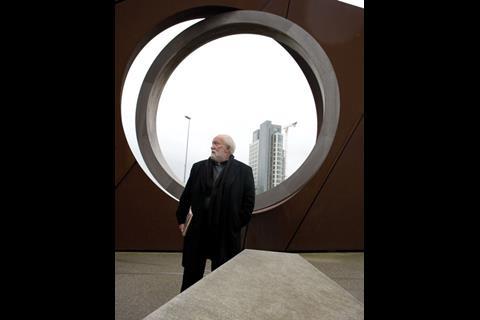
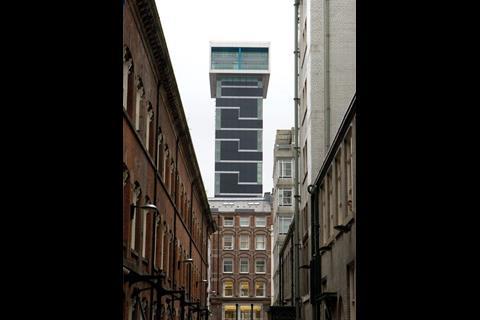

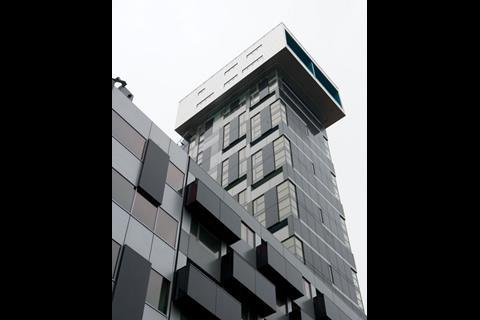

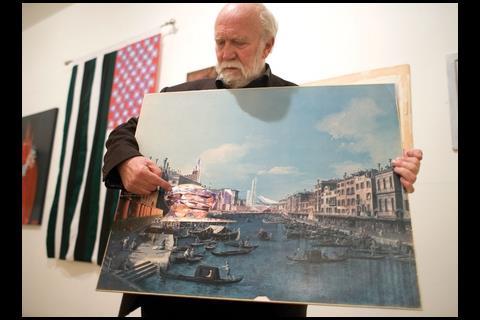
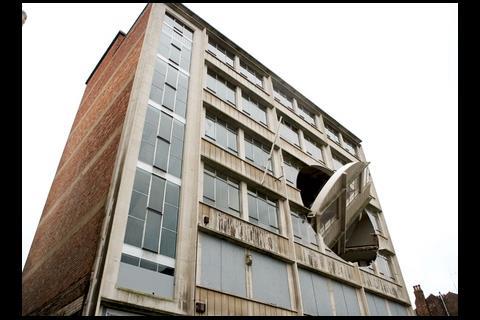
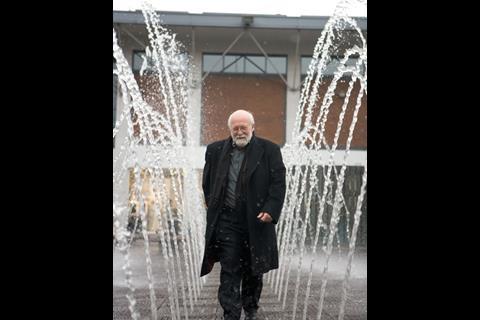
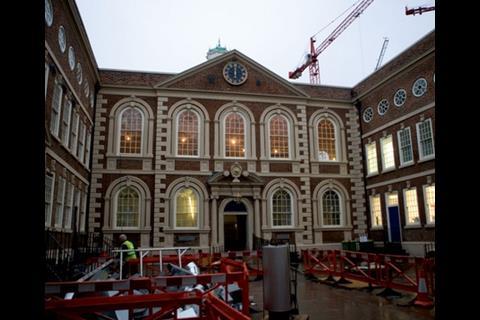
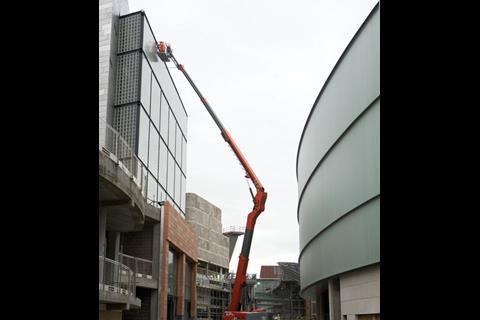
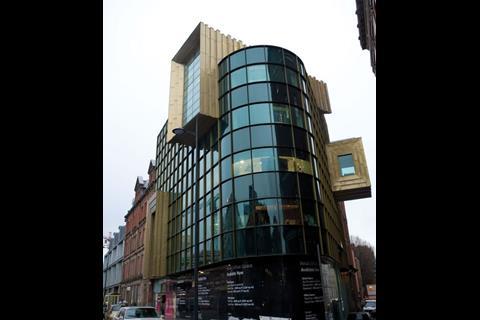
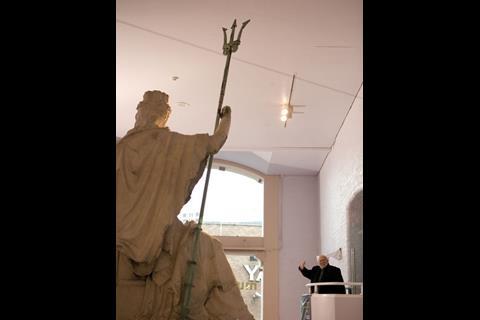
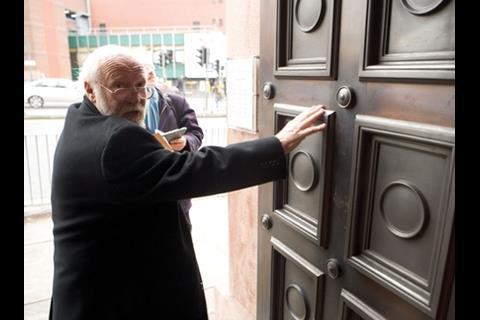
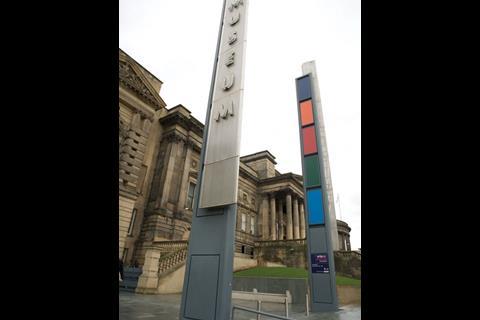











No comments yet